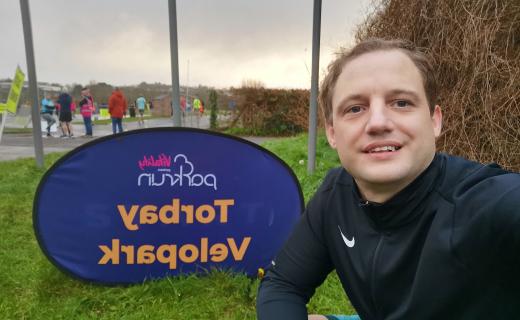VO2 Max and Reclaiming the Pace
My Strategy for Chasing a 5K Personal Best
Published November 23, 2023
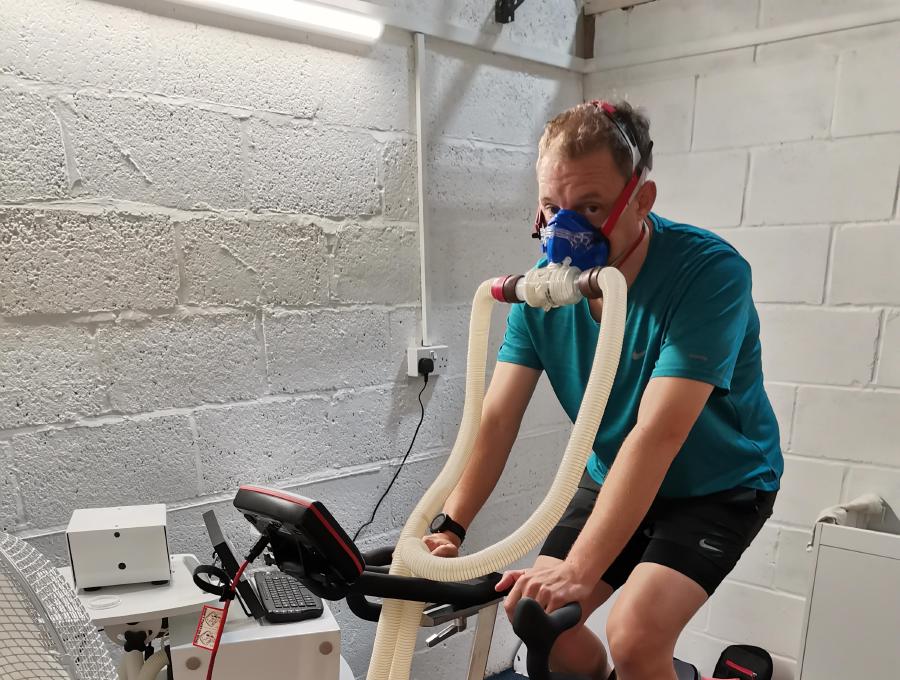
In pursuing our passions we often find ourselves veering off track occasionally. This year’s spring and summer months were a whirlwind of family commitments and garden landscaping that took me away from the roads and trails. In this post I would like to reflect on this period discuss how VO2 Max testing served as a wake-up call and share with you the new goal I am chasing down.
By the end of the summer I sensed that my running prowess was waning but it wasn’t until a submaximal VO2 Max test in September at the Exeter Cardio Hub that the stark reality hit home. My VO2 Max score had dropped from 55 ml O2/kg in February to just 43 ml O2/kg which is barely above average for my age. The decline was undeniable.
What led me astray from my running regimen this year? Primarily it was a labor of love. I embarked on transforming my garden a project that demanded sweat toil and a lot of soil. Hand-digging wheelbarrows and shovels became my tools of choice as I sculpted my green haven. The results are nothing short of satisfying…
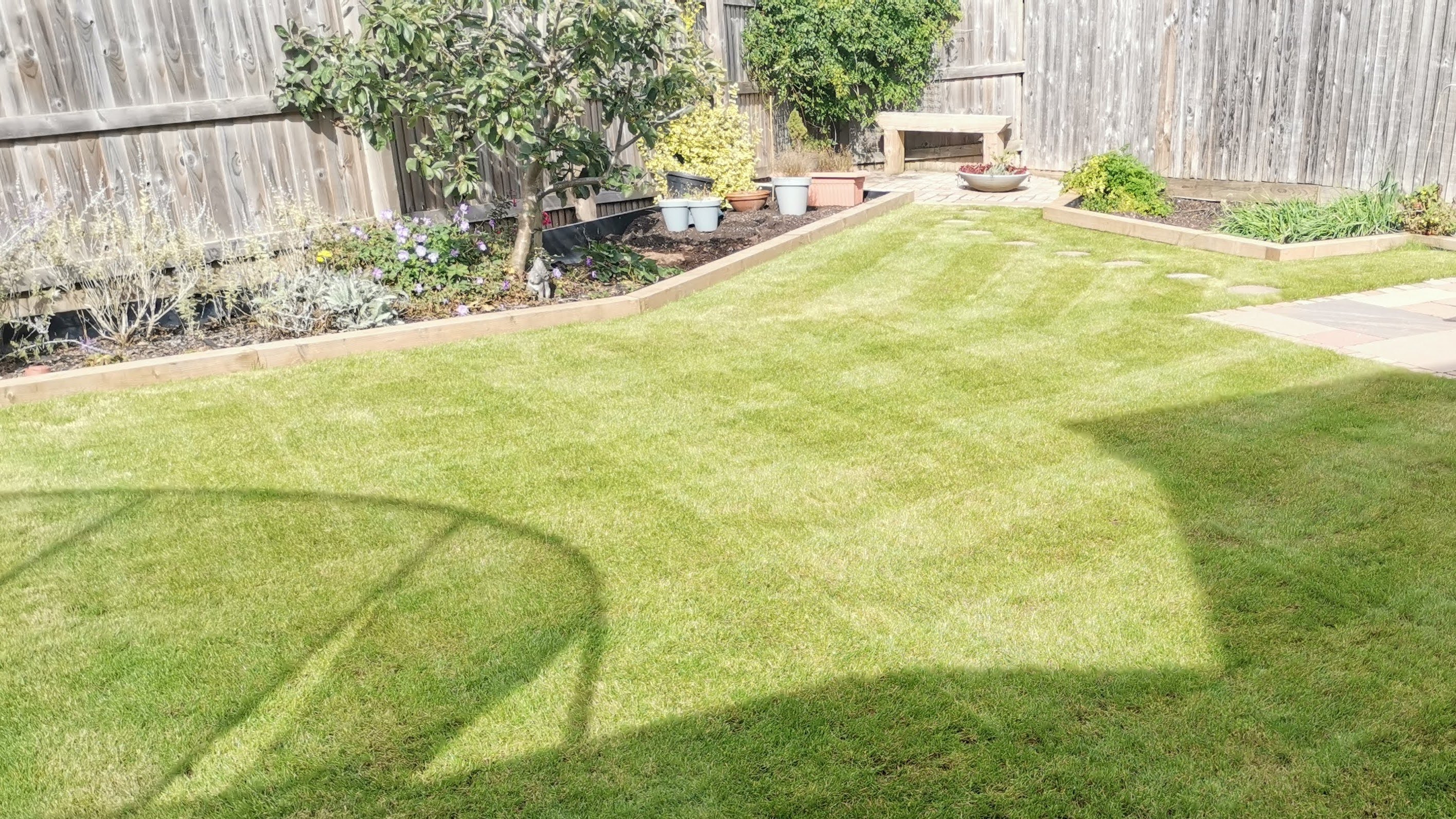
…especially when compared to its appearance just a year ago.
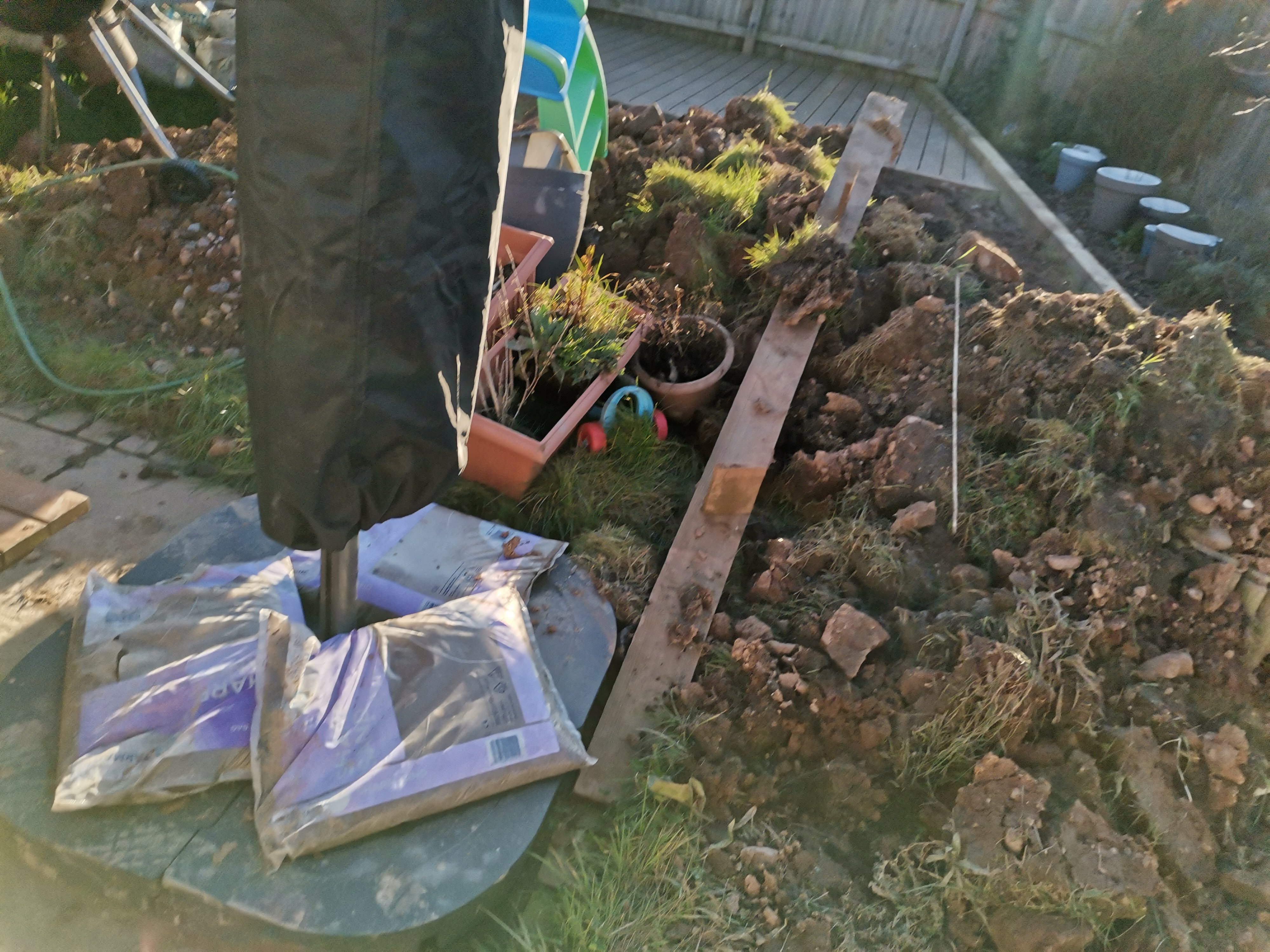
But I am still a runner at heart. Once the results were in I decided to work hard on rebuilding a solid base of running fitness. By the end of October my VO2 Max had bounced back to 54 ml O2/kg according to my test results at the Exeter Cardio Hub. Now with a strong base established I am working on setting a new 5K personal best (PB).
Let’s examine the submaximal VO2 Max Test its importance why I recommend the Exeter Cardio Hub my most recent week of training and how I plan to achieve a new 5K PB.
The Submaximal VO2 Max Test and Its Importance
A Submaximal VO2 Max Test estimates an individual’s maximum oxygen uptake (VO2 Max) without requiring them to reach their maximum level of exertion. VO2 Max the highest amount of oxygen your body can use during intense exercise is a crucial indicator of aerobic fitness. Thus a submaximal VO2 Max test is a gauge of our body’s ability to consume oxygen during exercise – a fundamental metric in endurance and aerobic capacity.
Think of it as a window into your body’s engine revealing how efficiently it operates. In my case the September test showed a significant negative shift from my February score of 55 ml O2/kg to a humbling 43 ml O2/kg. This change quantified my decline in fitness and served as an irrefutable wake-up call.
Had I not undertaken this test or relied solely on subjective feelings the extent of the decline might have gone unnoticed. I was doing minimal running and a lot of digging feeling relatively fit. However, the test provided concrete quantifiable evidence of the significant change in my aerobic capacity. It gave me a tangible measure of my fitness level and indicated the need for immediate action.
The Exeter Cardio Hub
Clive runs the Exeter Cardio Hub located in a small unit in Marsh Barton. Clive a former sports science engineer at Exeter University developed his own VO2 Max testing machine initially for the Police and Fire Service and continues to use it for staff fitness testing. Now retired from engineering Clive has opened the Exeter-based Cardio Hub offering science-backed cardio fitness training and testing services.
I highly recommend contacting Clive if you’re local. He has been instrumental in my training for over a year helping me achieve excellent results (despite my reduced effort over the summer).
Since the summer Clive has set me up with weekly 50-minute sessions consisting of two and a half times 20-minute blocks alternating between 60 seconds at 90%+ of max HR and 60 seconds at 80%+ of max HR with a final 10 minutes at a constant 80%+ max HR. Each session burns around 800 calories.
Additionally I aim to complete a 40-minute session each week on a rower maintaining my HR at or above 144 bpm (an age-related target) during each block.
These sessions not only improve overall fitness but also enhance my understanding of how and when to utilize my cardio fitness. For instance I can now confidently sprint the last 300 meters of a 5K something I would have struggled with in the past.
Chasing a New 5K PB
My current goal is to beat my 5K PB of 21:47 set on December 7th 2022 during a 4-mile time trial.
How Am I Going to Get There?
I am incorporating two key workouts: the “Seven by 1km Repeats” and the “8-second Hill Sprints.”
Speed Work:
- Seven by 1km Repeats: Inspired by Nick Bester’s post on the Strava Stories website I initially attempted 5 × 1km repeats with 75 seconds of static recovery between each. After coming across Andy Baddeley’s suggestion on the Running Channel’s Podcast for an eight by 1km variant of the workout with 70 seconds rest I was inspired to try again. This time I was more successful. I aim to run each kilometer at a pace between 4:17 and 4:24 /km which is based on my current 5K PB.
Base Work and Cardio Fitness:
- 8-second Hill Sprints: As recommended in Andrew Snow’s 2023 “Run Elite” book this method involves all-out sprints for just 8 seconds with 3-10 minutes of recovery between typically a jog. I set my watch to keep me in zone 2 and will job around the block during recoveries.
To maintain targeted cardio fitness I’ll continue with the workouts set by Clive at the Exeter Cardio Hub.
Balancing the Workout Schedule: I now follow the principle of never doing two hard days consecutively. My intense cardio work is scheduled for Tuesdays and Thursdays with lighter workouts on Mondays and Wednesdays. Fridays Saturdays and Sundays are more flexible depending on the weekend’s plans.
A Look at Last Week’s Training
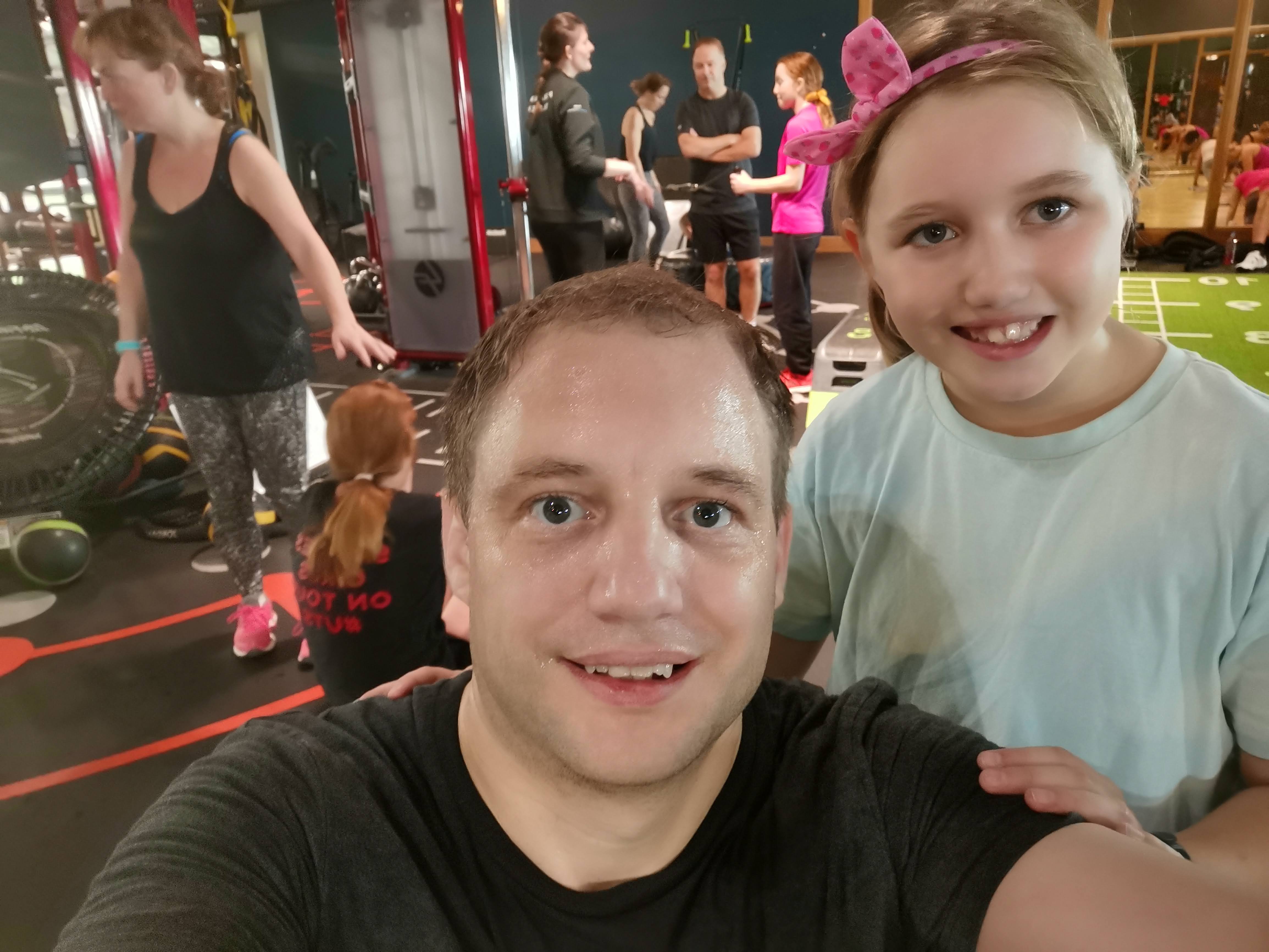
For the first week of this training block, I followed this schedule:
- Tuesday: Completed the seven-by-1km workout starting with a 1km warm-up at 11 kph and then 1km at 4:30 pace repeated seven times with 70 seconds of rest between each. I finished with a 1.4km cool down including a 400m kick at 16.6 kph. The workout felt invigorating.
- Wednesday: An easy 5km run for active recovery maintaining a pace between 5:36 and 6:14 /km.
- Thursday: Started with a tennis hitting session at 6 a.m. followed by a lunchtime cardio session and a slow 5km run in the evening with my daughter Hanna (riding her bike) averaging a pace of 7:00 /km.
- Friday: Rest day.
- Saturday: A 50-minute Family Synergy session with Hanna. This is primarily for kids but it’s still a good workout. My core is still feeling it at the time of writing this.
- Sunday: A 20-minute rowing session in the evening; otherwise it was a rest day.
What’s Next?
I will maintain this weekly routine while aiming for my next 5K PB. I plan to post regular weekly training logs as I document my journey. I’ll start training for a half marathon in January hoping to set a new PB in that distance in preparation for the Great West Run. So I better get this 5K PB soon.
As always thanks for reading and enjoy your running.
